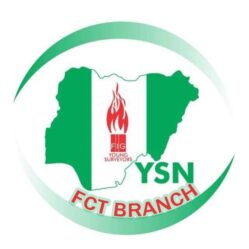Marine Geomatics is a multidisciplinary field that applies geospatial technologies to study and manage marine environments. From mapping the ocean floor to monitoring coastal erosion, Marine Geomatics plays a crucial role in understanding and safeguarding our oceans. This article delves into the diverse applications, challenges, and significance of Marine Geomatics in marine science and resource management.
Mapping the Ocean Floor:
One of the primary applications of Marine Geomatics is mapping the ocean floor. Using technologies such as multibeam sonar and satellite altimetry, Maritime Geospatial Experts can create high-resolution maps of underwater topography. These maps provide valuable insights into submarine geological features, including seafloor morphology, submarine canyons, and underwater volcanoes. Accurate bathymetric data is essential for navigation, offshore resource exploration, and habitat mapping.
Monitoring Coastal Dynamics:
Marine Geomatics enables the monitoring of coastal dynamics, including erosion, sediment transport, and shoreline changes. Remote sensing techniques, such as satellite imagery and aerial photography, help track coastal landforms and identify areas susceptible to erosion and inundation. This information is critical for coastal management and adaptation strategies, particularly in the face of sea level rise and extreme weather events.
Habitat Mapping and Biodiversity Conservation:
Geospatial Technologies play a key role in habitat mapping and biodiversity conservation in marine ecosystems. By combining satellite imagery with field surveys and underwater mapping techniques, Maritime Geospatial Experts can identify and characterize marine habitats, including coral reefs, seagrass beds, and mangrove forests. Understanding habitat distribution and biodiversity hotspots is essential for marine spatial planning, marine protected area design, and sustainable fisheries management.
Marine Spatial Planning and Resource Management:
Marine Geomatics supports marine spatial planning initiatives by providing spatial data and analytical tools for informed decision-making. GIS-based approaches integrate diverse datasets, such as bathymetry, marine habitats, shipping routes, and socioeconomic factors, to optimize resource allocation and minimize conflicts between competing uses of marine space. Marine spatial planning promotes sustainable development, conservation, and the equitable distribution of marine resources.
Challenges and Future Directions:
Despite its numerous benefits, Marine Geomatics faces several challenges, including data accessibility, technological limitations, and environmental variability. Improving data availability and quality, enhancing technological capabilities, and addressing gaps in our understanding of marine processes are essential for advancing the field. Additionally, integrating traditional knowledge and fostering interdisciplinary collaborations can enrich Marine Geomatics research and enhance its relevance to real-world challenges.
☀Opportunities for Surveyors in the Maritime Sector
Opportunities for Surveyors in the maritime sector are abundant and varied. Surveyors play a critical role in ensuring the safety, compliance, and efficiency of maritime operations. Key opportunities include:
1. Vessel Inspections and Surveys: Surveyors conduct detailed inspections of ships to ensure they meet international safety and environmental standards. This includes pre-purchase surveys, condition surveys, and damage assessments.
Surveyors play a pivotal role in ensuring the safety, efficiency, and regulatory compliance of offshore installations. They are responsible for conducting detailed surveys and inspections of seabed conditions prior to installation, ensuring the suitability of the site. During installation, Surveyors monitor the placement and alignment of platforms, pipelines, and other structures to ensure they meet design specifications and safety standards. Throughout the operational phase, Surveyors conduct regular inspections to assess structural integrity, identify potential hazards, and ensure compliance with environmental regulations. Their meticulous data collection and reporting also contribute to effective maintenance planning and risk management, ultimately supporting the safe and sustainable operation of offshore installations.
2. Offshore Installations: With the growth of offshore oil and gas exploration, Surveyors are needed to inspect and monitor platforms, rigs, and subsea infrastructure.
3. Port and Harbor Development: Surveyors are involved in the planning, construction, and maintenance of ports and harbors, ensuring navigational safety and structural integrity.
4. Marine Salvage and Wreck Removal: Surveyors assess damaged vessels and oversee salvage operations, ensuring that they are conducted safely and efficiently.
Surveyors in marine salvage and wreck removal play a critical role in assessing, planning, and executing operations to recover sunken or stranded vessels. Their responsibilities include conducting initial surveys to assess the condition of the wreck, identifying potential environmental risks, and determining the feasibility of salvage operations. Surveyors work closely with salvage teams to develop strategies for stabilizing the vessel, removing pollutants, and minimizing damage to marine ecosystems. Throughout the salvage process, they monitor progress, ensure compliance with salvage agreements and environmental regulations, and provide technical expertise to overcome challenges such as structural instability or hazardous materials. Their thorough documentation and reporting of salvage activities also support legal and insurance claims associated with wreck removal efforts.
5. Environmental Protection: Surveyors work on projects related to marine environmental protection, including monitoring marine pollution and assessing the impact of maritime activities on aquatic ecosystems.
6. Renewable Energy: Expanding offshore wind farms and other marine renewable energy projects presents new opportunities for Surveyors in site assessment, installation, and maintenance.
7. Mapping Surf Zones
One key importance of Surveyors in mapping the surf zone is ensuring safety and navigation. Surveyors provide precise maps that help prevent accidents and groundings by identifying hazardous areas and safe routes for boats and ships. This information is crucial for the safe operation of maritime activities in coastal regions.
8. Naval Architecture and Marine Engineering Providing technical expertise in ship design, stability assessments, structural integrity checks, and performance evaluations
These roles require specialized knowledge and skills, offering a dynamic and rewarding career path in the ever-evolving maritime industry.
Marine Geomatics plays a pivotal role in advancing our understanding of marine environments and supporting informed decision-making for sustainable ocean management. By leveraging geospatial technologies, Maritime Geospatial Experts can map the ocean floor, monitor coastal dynamics, and conserve marine habitats. As we continue to navigate the complexities of our oceans, Marine Geomatics will remain indispensable for safeguarding marine ecosystems and ensuring the health and prosperity of future generations.
Thank you for reading. We expect your feedback (either as a contribution or a question on this topic)



Very interesting.
thank you